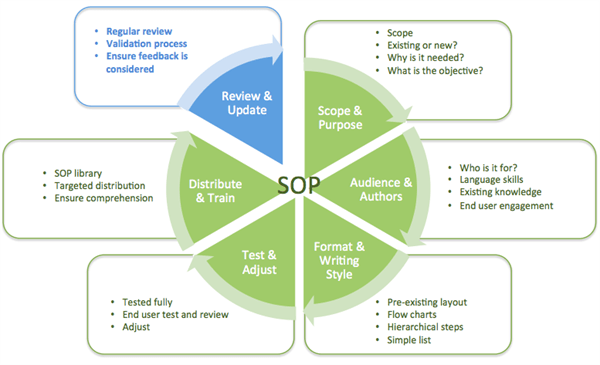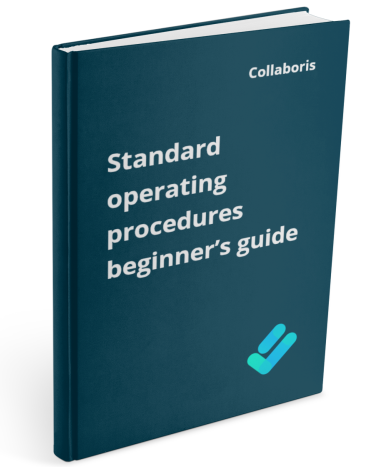Policy Approval Workflow Automated policy approval workflows offer several benefits that can significantly enhance ...
Standard Operating Procedures Guide – Review Process
Welcome back to the 7th and final blog on the ‘SOP Pie’. This series of blogs has described the key elements in the SOP lifecycle. Up to now we have been through the who, what and why’s of our SOP, followed by some fine tuning before getting it out there and understood.
So what is left?... Well, as I touched on in the Test & Adjust blog, Standard operating procedures have to evolve with the environment around them. This blog will look at the Review process, how you keep your SOP current, and ensure it continues to fulfil its purpose – Review & Update

Be it regulatory, structural, legal, physical, or staff based, the environment your SOP is operating within is almost certainly an ever changing one. We need to ensure that our SOP rises to the challenge of staying current and relevant in order for it to still do its job. How do we achieve this? Let's go through some of the considerations for an effective SOP Review Process.
Are your policies read on time and by the right people?
DocRead makes compliance simple
Self Regulating
Depending on the SOP, it may make sense to achieve this review and update by making it part of the SOP itself. By that, I mean a process that includes steps or checks against the relevant environmental considerations. E.g. Include a check and update step at the start of the process. Or having variable elements in the SOP that are referenced and looked at the point when the SOP is executed.
Expiry Dates and Reminders
There may be value in setting expiry dates on your SOP documents. This would ensure they are no longer distributed when they are expired or until a review is completed. If using DocRead as recommended previously, you can take advantage of the DocRead expiry date feature coupled with Power automate workflows to achieve this to achieve this.
Ownership
Each SOP or set of SOPs has to have a clear defined owner who is responsible for whatever the agreed review and update approach is. Clear ownership has to be maintained for this over time, ensuring responsibility is shifted as people move around the organisation. As well as ownership of the SOP, in most circumstances there would need to be some ownership of the influencing factors for this SOP.
Managing Influencing Factors
These are the things that have an impact on your SOP. They usually fall into one of the environmental elements mentioned above. E.g. Regulatory. There needs to be a level of management against each of the Influencing Factors for your SOP, with a person, team or process being responsible for keeping up on changes. Identifying each of your influencing factors and understanding how the SOP owner will be made aware of these is key to success in your SOP Review Process.
That about concludes our series on the SOP lifecycle. I hope that the information gives you a helping hand on your SOP creation and maintenance journey, and that the recommended solutions were useful to you.
Happy SOP’ing and thanks for reading!!
Get your free Standard Operating Procedures guide
Creating Standard Operating Procedures for your organisation doesn't have to be complicated. This guide will introduce you to the whole lifecycle from creation to training and distribution.
Other articles in the series:
You may also like:
Creating policy review reminders in Office 365 You might want to set up a ...
Podcast: Implementing effective healthcare procedures Implementing effective healthcare procedures is an ongoing process. It ...
Podcast: 10 Powerful Strategies for Employee ComplianceOrganizations face challenges in ensuring employee compliance with ...
AI Warns About Itself: How I Asked AI to Create a Podcast on the ...
Benefits of writing SOP's In any organization, standard operating procedures (SOPs) are critical to ...

